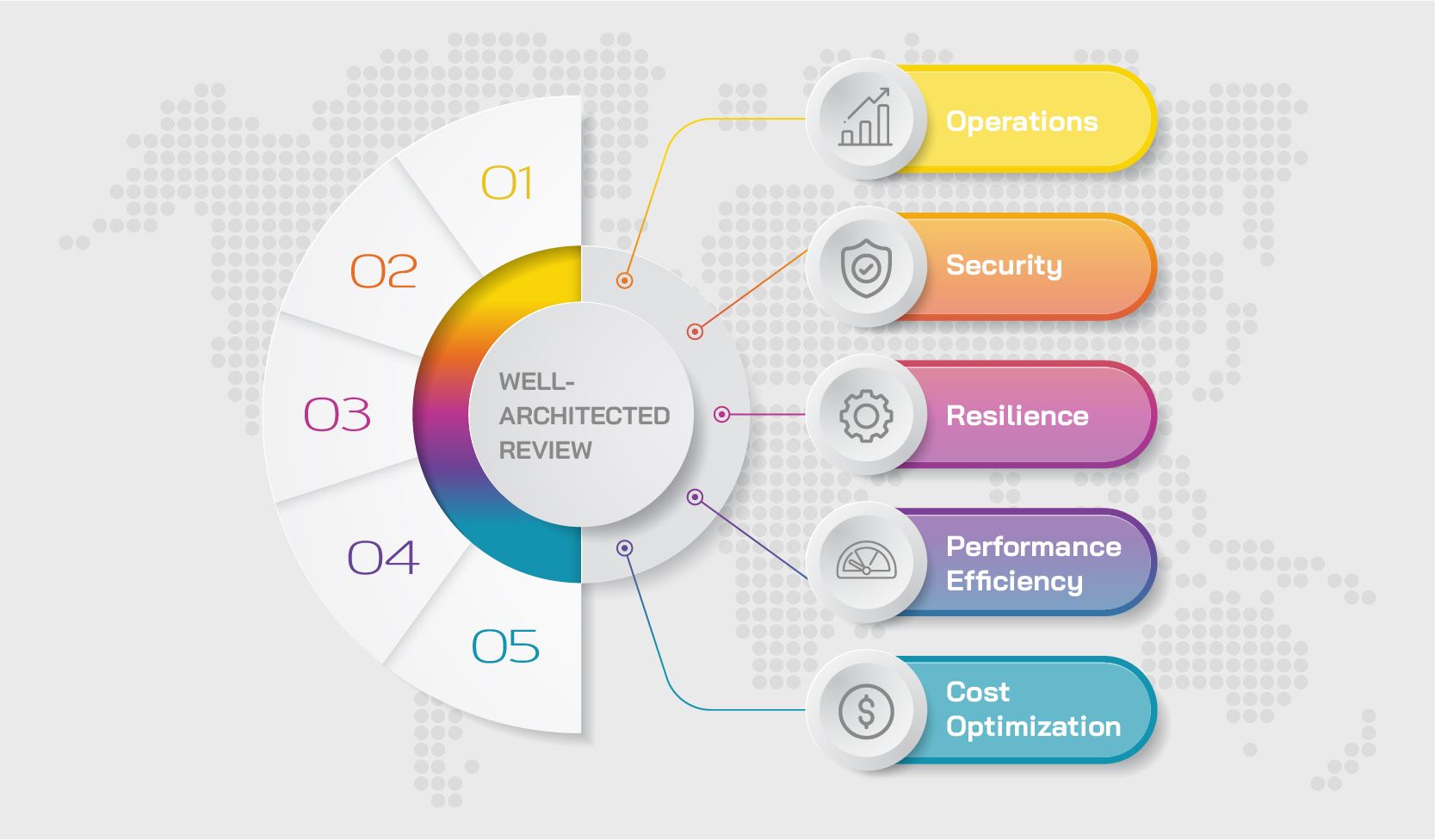ARE YOU WELL-ARCHITECTED?
Solution
WELL-ARCHITECTED REVIEW YOUR SYSTEM
Enable you to build secure, high-performing, resilient, and efficient infrastructure for your workloads by integrating Well-Architected as a mechanism to govern architectural decisions and compare workloads against AWS best practices.

choose the right use case for you
SOLUTION

Operations
The operational excellence pillar focuses on running and monitoring systems to deliver business value, and continually improving processes and procedures.

Security
The security pillar describes how to take advantage of cloud technologies to protect data, systems, and assets in a way that can improve your security posture.

Resilience
The reliability pillar encompasses the ability of a workload to perform its intended function correctly and consistently when it’s expected to.

Performance Efficiency
The performance efficiency pillar focuses on the efficient use of computing resources to meet requirements, and how to maintain efficiency as demand changes and technologies evolve.

Cost Optimization
The Cost Optimization focuses on how to architect workloads with the most effective use of services and resources, to achieve business outcomes at the lowest price point.

/Well-Architected/
Operations
The Operational Excellence pillar includes the ability to support the development and run workloads effectively, gain insight into their operation, and continuously improve supporting processes and procedures to deliver business value. Key topics include automating changes, responding to events, and defining standards to manage daily operations.
There are five design principles for operational excellence in the cloud:
- Perform operations as code
- Make frequent, small, reversible changes
- Refine operations procedures frequently
- Anticipate failure
- Learn from all operational failures

/Well-Architected/
Security
The Security pillar includes the ability to protect data, systems, and assets to take advantage of cloud technologies to improve your security. Key topics include confidentiality and integrity of data, identifying and managing who can do what with privilege management, protecting systems, and establishing controls to detect security events.
There are seven design principles for security in the cloud:
- Implement a strong identity foundation
- Enable traceability
- Apply security at all layers
- Automate security best practices
- Protect data in transit and at rest
- Keep people away from data
- Prepare for security events

/Well-Architected/
Resilience
The Reliability pillar focuses on ensuring a workload performs its intended function correctly and consistently when it’s expected to. This includes the ability to operate and test the workload through its total life-cycle. Key topics include distributed system design, recovery planning, and how to handle change.
There are five design principles for Reliability in the cloud:
- Automatically recover from failure
- Test recovery procedures
- Scale horizontally to increase aggregate workload availability
- Stop guessing capacity
- Manage change in automation

/Well-Architected/
Performance Efficiency
The Performance Efficiency pillar includes the ability to use computing resources efficiently to meet system requirements and to maintain that efficiency as demand changes and technologies evolve. Key topics include selecting the right resource types and sizes based on workload requirements, monitoring performance, and making informed decisions to maintain efficiency as business needs evolve.
There are five design principles for performance efficiency in the cloud:
- Democratize advanced technologies
- Go global in minutes
- Use serverless architectures
- Experiment more often
- Consider mechanical sympathy

/Well-Architected/
Cost Optimization
The Cost Optimization pillar focuses on avoiding unnecessary costs. Key topics include understanding and controlling where the money is being spent, selecting the most appropriate and right number of resource types, analyzing spend over time, and scaling to meet business needs without overspending.
There are five design principles for cost optimization in the cloud:
- Implement cloud financial management
- Adopt a consumption model
- Measure overall efficiency
- Stop spending money on undifferentiated heavy lifting
- Analyze and attribute expenditure
Explore
Solution



